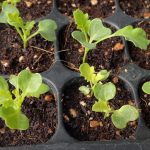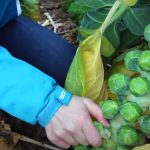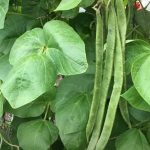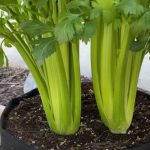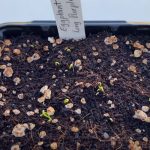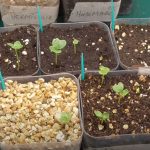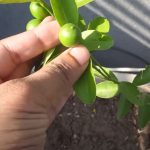Do you know lavenders can thrive beautifully indoors and produce flowers repeatedly with proper care? Why not learn how to grow lavender from seeds indoors, then? Check out my curated instruction, and you can plant your first lavender cluster successfully!
Overview
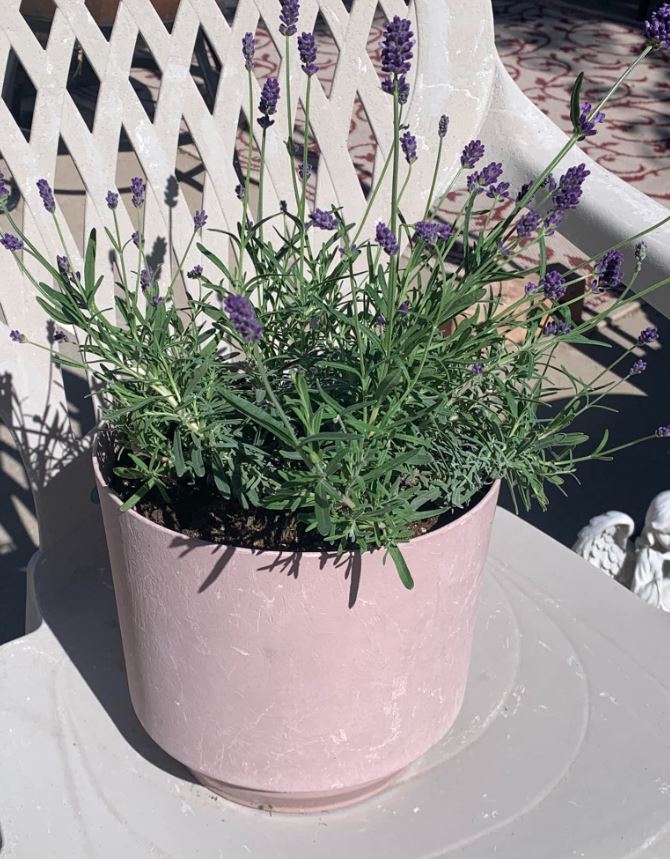
Level of difficulty: Easy – Intermediate. What you need is patience.
Height: A lavender plant can grow anywhere from 1 to 3 feet tall outdoors, but the average height is 2 feet. With that size, this perennial can develop indoors without gobbling too much space. In case you want a shorter lavender variety, consider dwarf lavenders, as they grow under 1 foot only with proper technique.
Time to flower: After 1 year since we grow the flowers from seeds. But, if you purchase a young plant, it may take only 3 months to enjoy the first bloom in your garden.
In the first year, young lavender plants grown from seeds produce fewer flowers than expected because they haven’t reached maturity. From the second year, the yield is considerably improved. And in the third year, the plants are fully developed and will bloom abundantly, having reached their mature age.
Lifespan: 5 – 15 years with proper pruning and care. Indoor and outdoor lavenders can last long as they are low-maintenance.
Choose The RightLavender CultivarsTo Grow Indoors

There are 3 types of indoor lavender that you should consider growing due to how well they adapt to certain usually unfavorable conditions:
- French lavender: Adapts to temperature fluctuations well
- Canary Island lavender: Suitable to grow in colder regions, attracts bees
- Goodwin Creek Grey lavender: Resists heat well, suitable for warmer climates
Preparation
- Cell flats or a large pot
- Loamy soil
- Distilled water for germination
- Paper towel and a sealed container like a Ziploc bag or plastic Tupperware (if you want to germinate with the paper towel method)
- Organic fungicide
- Blood meal or bone meal as fertilizer
- Artificial sunlight lamp (optional)
How To Grow Lavender From Seeds IndoorsStep-By-Step
Check out my planting guide of 4 steps, and you will know how to grow lavender from seeds indoors!
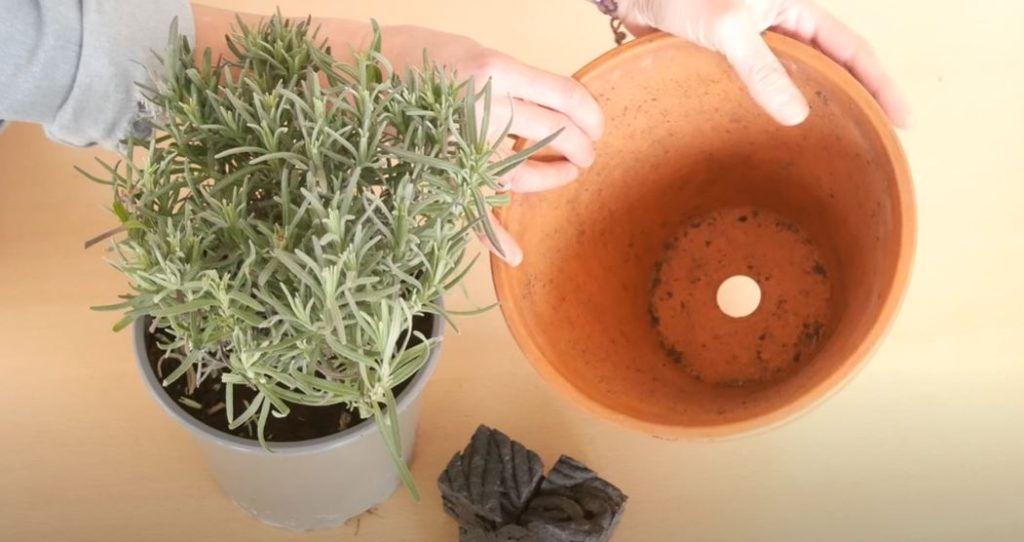
Germination
- Germinating lavender seeds with kitchen paper/ paper towel: This method requires greenies to be very careful when removing the seedlings from the paper towel to transplant them to garden soil. But it’s still favorable due to how easy it is to check for viability with this method.
Step 1: Open a paper towel on a flat surface and spray until it is damp with water. I advise using tear-resistant paper, but not this time. Lavender seeds are tiny, even smaller than chia seeds, and their roots are also fragile. When the roots stick to the paper and even perforate it, a tear-resistant paper will make it harder to transplant. So using a soft type will make it easier to tear the paper away from the stem and root.
Step 2: Sprinkle the seeds evenly on the damp paper towel. You don’t have to spray them with water again, and don’t cover them in another layer of paper towel. This will avoid drowning the seeds, especially when the lavender isn’t water-loving.
Step 3: Put the paper towel with the seeds inside a plastic container with a lid or a Ziploc bag to create the greenhouse effect and seal the moisture. Place the seeds in the fridge for 2-3 weeks to replicate the late winter climate where they naturally sprout. This step is called cold stratification.
When growing lavenders outside, it’s entirely different. We can partially impact the germination speed and rate by providing constantly warm temperatures to the lavender seeds sown outdoors, and 70-75oF is an ideal level.
Step 4: Most lavender seeds will germinate after 3-4 weeks. But if you see a low germination rate, remove them from the cold and place them under a light source for 1-2 more weeks. Check their condition occasionally and spray more water if the humidity is too low.
Step 5: After over a month, you can already see viable seeds with grown roots and the first stem. Pay attention to those that are viable only. Use a tweezer or any other small tool to detach the seedlings from the paper tower. Be careful not to break the roots or the stems.
- Germinating seeds in soil: Skip the transplanting step with this method of germination.
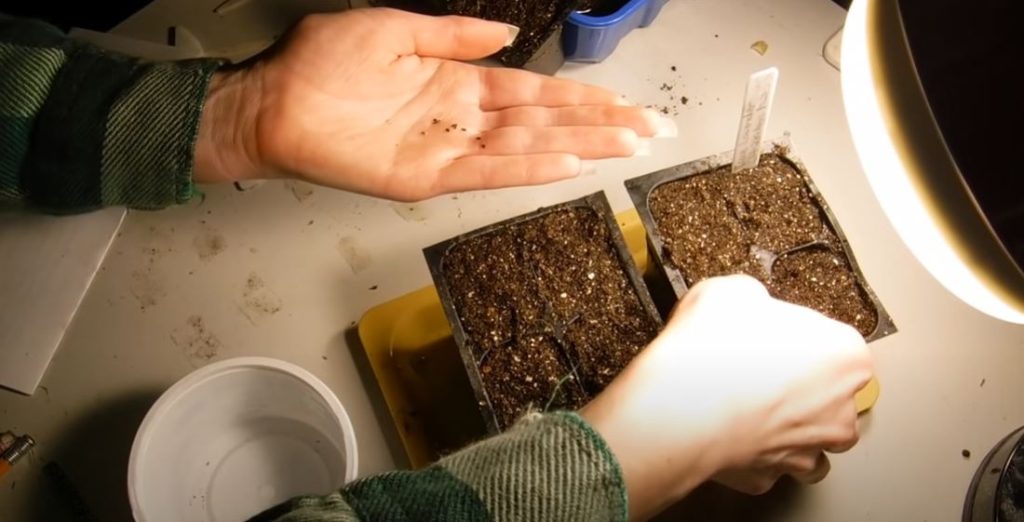
Step 1: After purchasing the seeds from a reliable source, make sure that the seeds are dry so that mold, bacteria, or bugs aren’t attracted.
Step 2: Prepare loamy and well-drained soil with no fertilizer or compost. Lavenders don’t need extra nutrients as they can cause rot and diseases easier at an early age.
Step 3: Sow many seeds into a big pot or 5 seeds into each compartment if you grow them in cell flats. And dust a layer of soil over the seeds. Make sure the layer is thin because the seeds need access to light.
Why should we sow that many seeds at a time? Fun fact: the big bush of lavender flowers you see doesn’t grow from a single root system or principal stem. It’s actually a combination of various lavender plants. So sowing numerous at a time will result in a round and abundant cluster at the end.
Of course, if you want to see the lavenders stand a bit sparsely, reduce the seeds’ population density.
Step 4: Water lightly and allow imbibition to start. Provide sun or artificial light for the seeds to grow into seedlings. After 3-4 weeks, you should see the seedlings poking through the soil.
Seedling
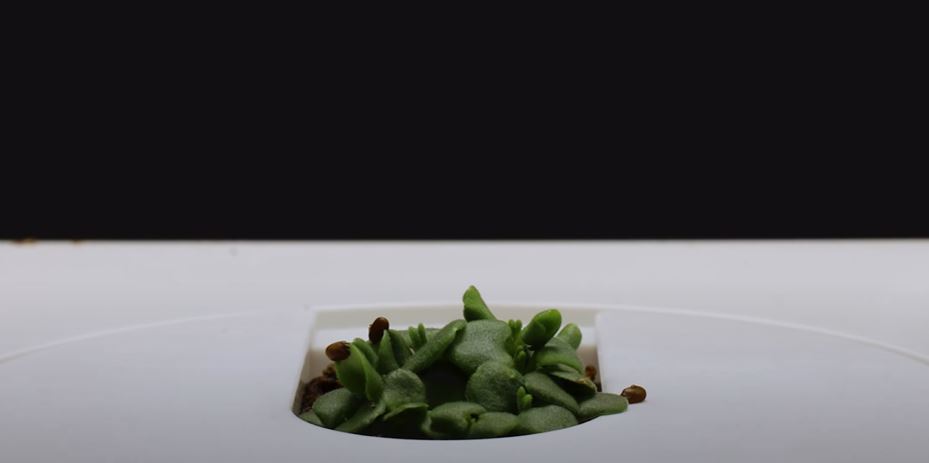
Now that you have the seedlings keep taking care of them by following a watering rule: water moderately and allow the soil to dry out a bit between watering days. Root rot is a common problem when people try to grow lavender, so avoiding overwatering can partially stop the risk. Other than daily sunlight and weekly watering, there is little care we can and have to provide for the seedlings.
If you notice bugs starting to circulate the pots, don’t be afraid to use organic fungicide, either. Fungicides can prevent diseases and chase away insects that may threaten the plants’ health. You can try Lavender Total, Neem Spray, or PlantShield HC Biological. Spray your crops with one of these after about 2 months after germination is safe.
Adult plant
Taking care of adult lavender is the same as with the seedlings. The only major difference is that you should start adding fertilizer at this point since you are growing the flowers indoors. Before there is any bud formation, use a blood meal or bone meal to upgrade the soil.
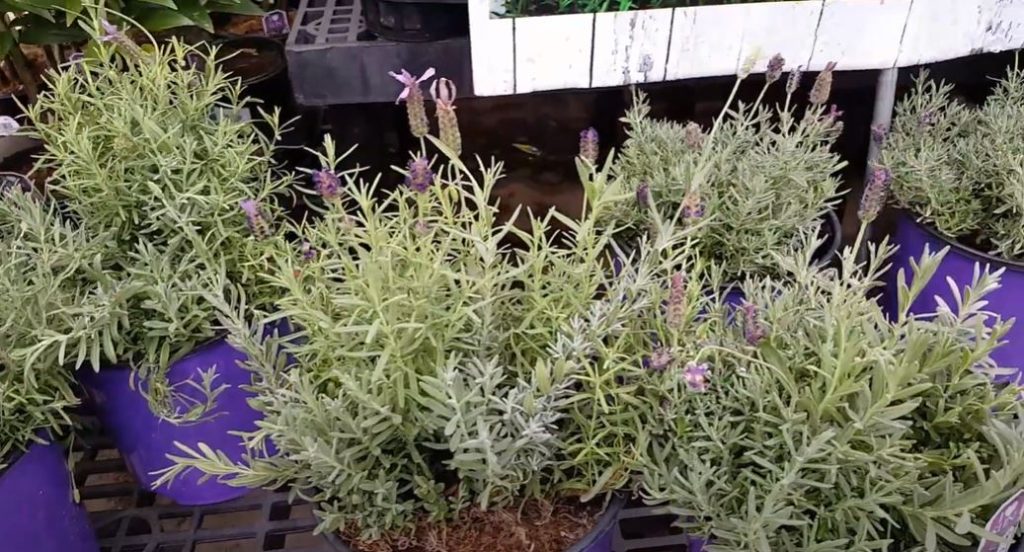
Harvest
Harvesting lavender is the same as pruning the tree itself. Cut the stems with the flower buds not entirely bloomed yet, and make sure not to cut more than 2/3 the length of the stems, from the roots to the tops.
How To Care For Your Lavender Bushes
Check out how you should take care of your beautiful lavender plants here!
Light
Do lavender seeds need light to germinate? Lavenders prefer warm climates, so it’s natural that they love direct and full sun. In fact, the sun is so important in lavenders’ diet that they may die without it. This species isn’t shade-tolerant and needs sun to avoid root rot. And growing lavender indoors makes it trickier to provide the aromatic flowers with full sun and requires flower lovers to pay more attention.
The most convenient method is to place the pot on a window sill that catches rays of light constantly. If you don’t have a spot in the house with that ideal condition, consider bringing the pot outside so the plant can enjoy at least 6-8 hours of direct light daily. If you have school or work, simply take the pot out when you leave and bring it back inside when you come back. Or, even better, purchase garden lights that produce artificial sunlight for your plant.
Of course, this method works for dwarf and young lavender plants only since the entire pot, plus the soil, can get too heavy for our back. Therefore, it’s vital to consider this aspect BEFORE you plant your first shrub.
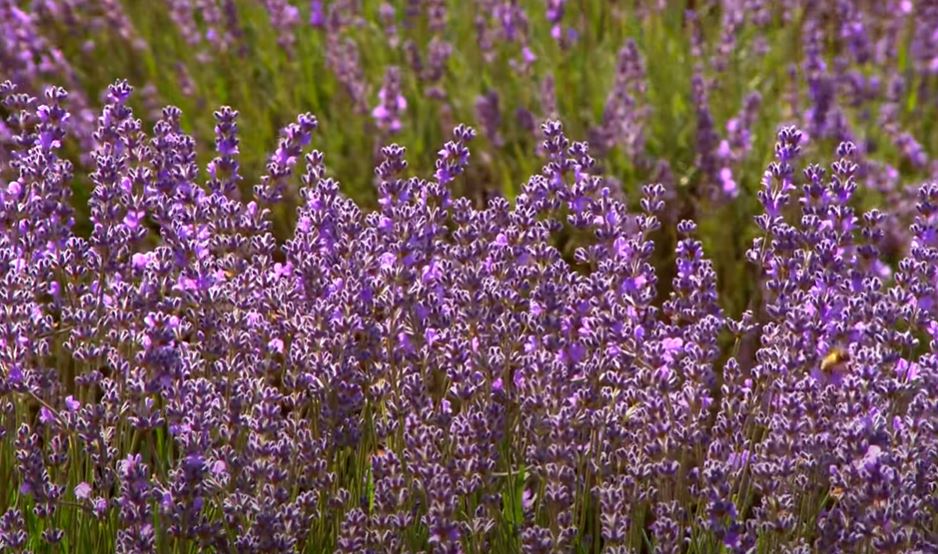
Temperature
Lavenders thrive in 65 to 85oF, equally cool to warm weather with a low level of humidity. If planted indoors, it’s even easier to control this aspect. With that said, being a perennial type, lavenders can withstand certain drops in temperature as low as 40oF during the coldest months.
With that said, it’s best to avoid sudden temperature changes. The difference between day and night should be at most 20-25oF. That’s why I suggest leaving the plant on a shelf where temp fluctuation is mitigated during nights and moving it next to a window sill during days so it gets its daily dose of sunlight.
In case there is almost no fluctuation in heat, you can leave the plant next to a natural light source and leave it be.
Water
There isn’t a specific watering schedule at the beginning of lavender’s life. So, you should proactively check the soil’s moisture every now and then to ensure it still holds water. If the first 1-2 inches of the soil is dry to the touch, water your lavenders immediately. So, the watering may occur twice a week, max.
Keep up with the watering for a few months and start decreasing it. Water once every 2 weeks before the flower buds form. After the buds have emerged, you can restore the watering frequency until the flowers bloom. Watering too frequently when the purple flowers are mature will encourage them to wilt faster. So once every 2-3 weeks is recommended.
Lavenders can also withstand drought well when they have reached the mature phase, which is about 2-3 years after planting.
Oxygen
This flower species needs oxygen, just like any other vegetable, tree, or flower. So, to ensure that your cluster gets its oxygen, use loamy soil with well-drained characteristics to avoid the lack of oxygen due to water filling up the air pockets. Add some perlite or vermiculite to the soil blend to add more air pockets if you don’t want to use compost. Both are good options!
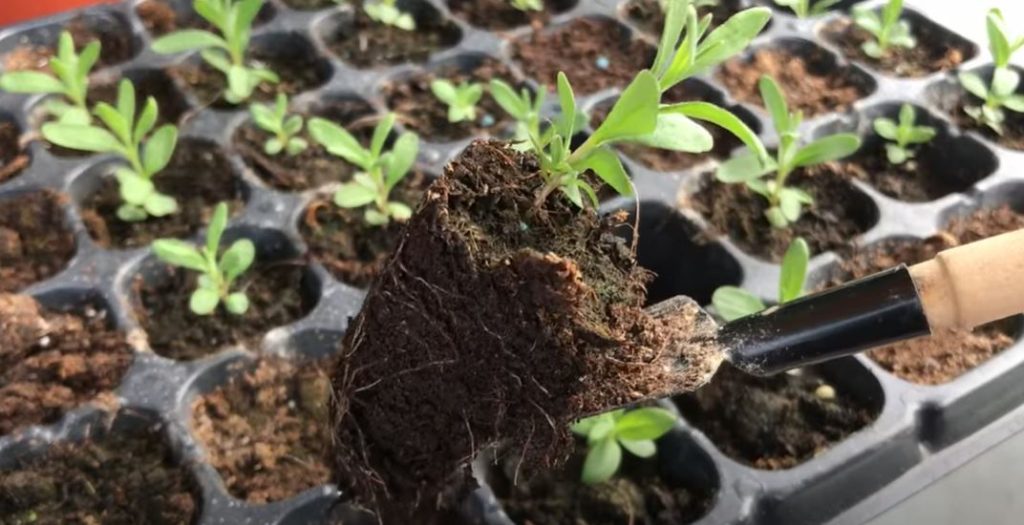
Diseases
Root rot is a common disease among lavender bushes. But the cause may vary. Sometimes it’s because the soil isn’t well-drained and gardeners overwater, but other times it’s because of the fungus Thielaviopsisbasicola. With that said, this pathogen thrives due to overly damped soil in cool climates. So controlling the watering will proactively block this type of fungus.
Fertilizer
Fertilizer isn’t needed for outdoor lavenders. Avoid providing too many nutrients to your soil because lavender prefers a well-drained but malnutritioned base. Giving the plant too many minerals or nitrogen can promote leaf growth instead of bud.
On the other hand, indoor lavender may need an extra boost of fertilizer in June if you sow the seeds during the last winter months. And the second dose should come in August or after the first flowering month of your plant.
Prune
Pruning lavender after reaching the flowering season is essential to encourage more beautiful flowers to spawn in the next season. After the flower blooms and fade (after June-July), you can prune all the branches and leave 1/3 of their length. If you leave the flowers to fall and take care of themselves, the plants will soon become woody and have a shorter lifespan. In addition, woody lavenders don’t bloom very pretty.
All the information you need to know about growing lavender indoors from seed is here! I understand it requires a lot of patience, but the result will be worth it! Grow your own lavender pot and improve your sleep quality with its tranquil aroma.
